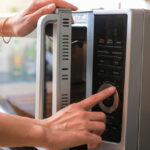Microwaves have become a common household appliance for reheating food. With just a few simple steps, you can have a hot meal ready in no time. However, many people don’t understand the basic principles of how microwaves work, resulting in unevenly heated food. Let’s explore the ultimate guide to reheating food like a pro!
1 Placement in the Microwave
It is common for people to place their food in the center of the microwave, but this can lead to uneven heating as the waves tend to travel from the outside in, leaving the center untouched (often referred to as a cold spot). A simple tip is to position your food slightly off-center to ensure even heating.
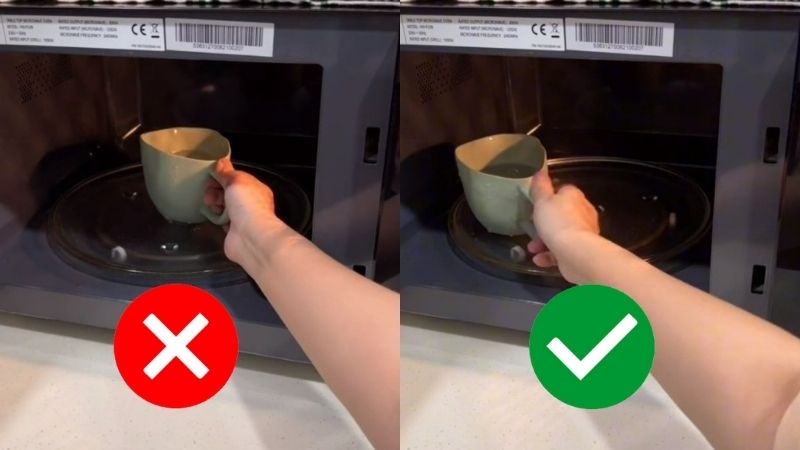 Place food slightly off-center in the microwave
Place food slightly off-center in the microwave
2 Arranging Food on the Plate
When reheating leftovers, it’s tempting to pile the food in the center of the plate and pop it into the microwave. However, microwave waves struggle to penetrate deep into the food, leaving the center cold.
Instead, try arranging your food in a circular pattern around the edges of the plate, leaving the center clear, and you’ll notice a significant reduction in reheating time, resulting in tasty, evenly heated food.
Note: If your food items vary in size, place the larger pieces on the outer edges and smaller pieces towards the center for optimal heating.
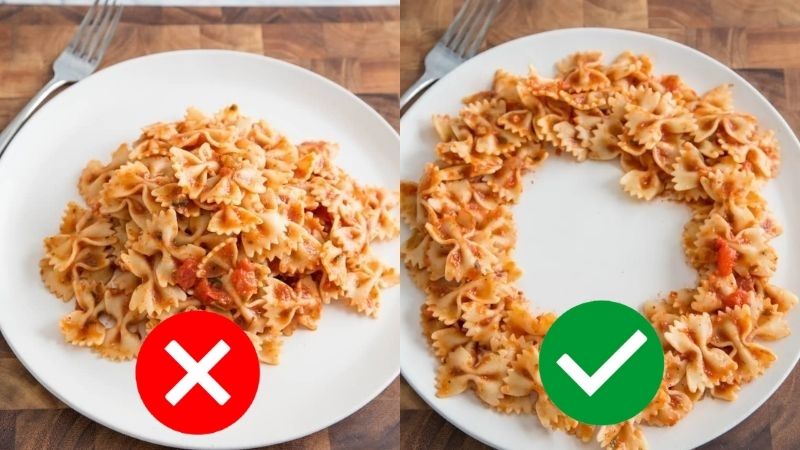 Arrange food in a circular pattern for even heating
Arrange food in a circular pattern for even heating
3 Use Microwave-Safe Containers
It’s crucial to use microwave-safe containers when heating your food. Avoid using metal or stainless steel containers as they can cause arcing and create a fire hazard.
Additionally, aluminum foil and paper bags are a no-go as they can spark and release toxic fumes. Always opt for glass, ceramic, or microwave-safe plastic containers.
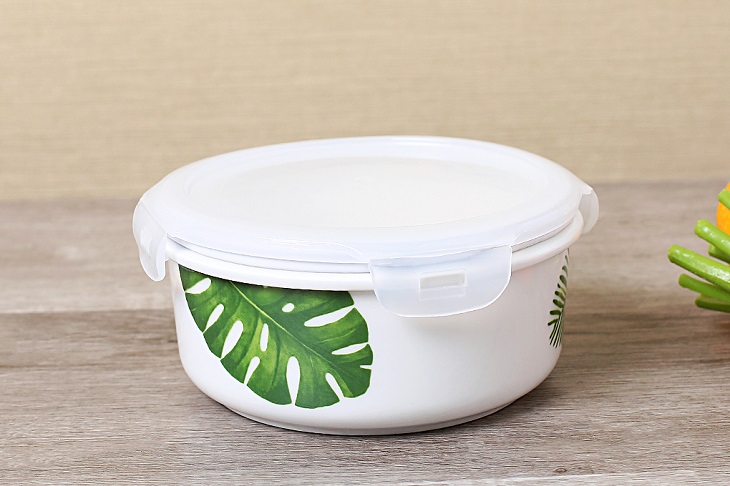 Use microwave-safe containers
Use microwave-safe containers
4 Moisture Retention
If you’re reheating stews or dishes with sauces, add a splash of water before microwaving to prevent drying out. You can also use microwave-safe lids or plastic wrap designed for microwave use to retain moisture and prevent sauce splatters.
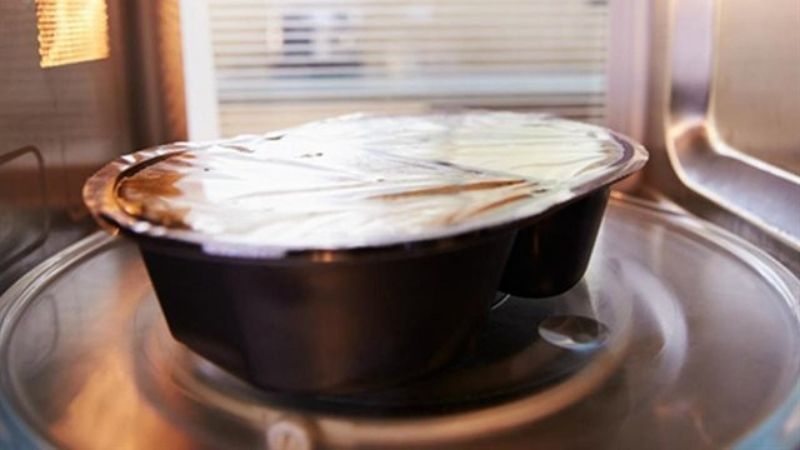 Use microwave-safe lids or plastic wrap to retain moisture
Use microwave-safe lids or plastic wrap to retain moisture
5 Reheat in Stages
When dealing with layered or thick foods, consider reheating in stages rather than all at once. Additionally, if you have thick slices of meat, try cutting them into smaller pieces for more effective heating.
6 Adjust Time Accordingly
It’s important to adjust the cooking time and power level based on the type of food you’re reheating. Avoid overdoing it, as this can impact the food’s texture and your health.
The ideal reheating time is between 30 seconds and 1 minute, preserving the original flavor and texture of your meal.
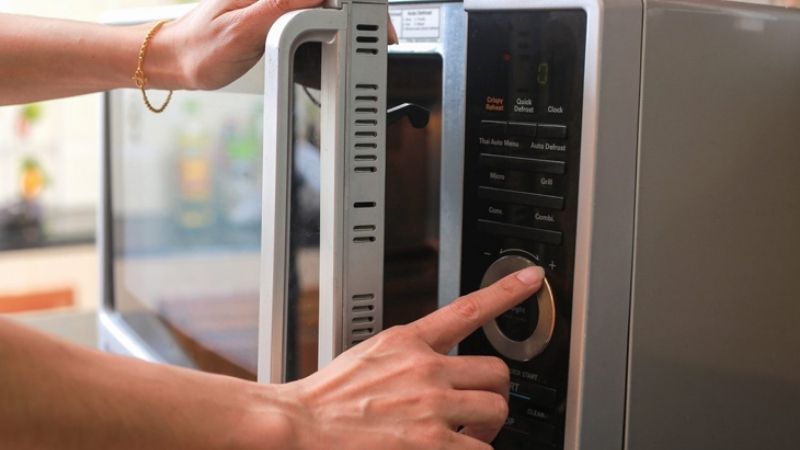 Adjust reheating time accordingly
Adjust reheating time accordingly
We hope these tips help you master the art of reheating food. If you have any additional microwave hacks, be sure to share them with us!
The Ultimate Guide to Microwave Safety: Essential Do’s and Don’ts Every Home Chef Needs to Know
Introducing the ultimate guide to mastering your microwave oven and extending its lifespan. Uncover the secrets to utilizing your microwave efficiently and effectively, with tips and tricks that will revolutionize the way you heat up your favorite meals. From optimizing heating times to understanding the intricacies of your appliance, this article is a must-read for anyone looking to get the most out of their microwave. Get ready to transform your cooking game and keep your microwave in tip-top shape for years to come!
The Secret to Cooking Vegetables Without Water: Locking in Nutrients and Flavor
Introducing a revolutionary take on an age-old practice – the art of boiling vegetables. We’ve all heard the traditional advice from our grandparents: use ample water, a high flame, and a pinch of salt to lock in that vibrant color and tasty goodness. But what if we told you there’s a game-changing twist to this time-honored technique? Prepare to be intrigued as we unveil not one, but two, waterless methods that promise to retain all the essential nutrients in your veggies. Join us on this culinary journey as we explore these innovative and refreshing approaches to boiling vegetables!
The Secret to Reviving Stale Bread: Crisp and Fresh as New
Stale bread tends to get soggy, dry, and chewy, losing its delicious appeal. Bach Hoa XANH will reveal a clever way to “revive” a dull loaf of bread, transforming it into something hot, crispy, and tasting as fresh as ever. In just a few minutes, you’ll have a loaf of bread that’s crispy on the outside, soft and tasty on the inside, just like new.

























